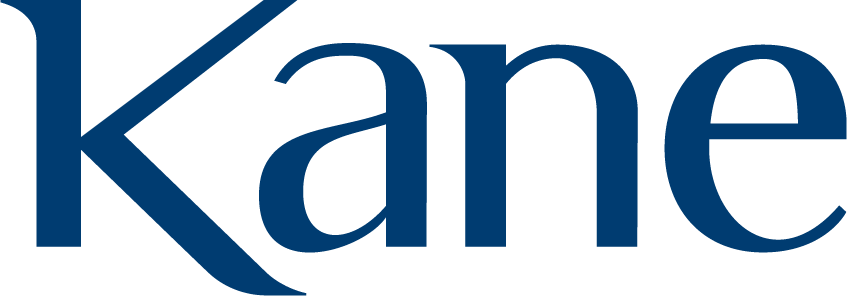Investing in Employee Engagement During the Great Resignation
Last year holds the highest record of people quitting their jobs per month, with an average of 3.98 million individuals making career changes, changing employers or leaving the workforce altogether. The 2021 Kane Insights Report found that 50% of working women in Wisconsin consider quitting work constantly, often or sometimes. These numbers are staggering and have employers struggling to keep their doors open as there are not enough employees to get the work done and the cost of losing employees is a drain on a business’ bottom line.
It’s estimated that the cost of replacing an individual employee can range from one-half to two times an employee’s annual salary. Losing employees not only has a financial impact on an organization, but it can also impact customer relationships, team dynamics and morale, leadership styles, and potentially, lead to additional turnover. During this period of the Great Resignation (employees leaving their jobs in high numbers), it’s critical employers double down on employee engagement efforts to keep the great talent they have and as a way to attract new employees.
Invest in your team
It’s no surprise that the 2021 Kane Insights Report data shows that when employees feel connected to their workplace, both the employer and employee benefit — including reduced stress levels, improved job satisfaction, job retention, productivity and profitability. Employees will work harder when they feel part of a team.
To help foster that sense of connectedness, employers and managers should invest in team-building exercises, all-staff events and off-site activities. A half-hour coffee break with a co-worker, birthday treats for the office, a monthly happy hour or department team building activities go a long way in strengthening the team bond, allowing co-workers an informal opportunity to get to know each other and see that their employer cares about its employees’ health and well-being.
Offer flexibility
Coming out of the pandemic, flexibility is a top priority for talent - for women and men alike. Gone are the days of reporting to the office five days a week. People want flexible schedules and hours. In order to remain a competitive employer, companies must find ways to accommodate employees' various needs and desires. This may mean hybrid work schedules, adjusted work hours, four-day work weeks or the option to work fully remote to escape the Wisconsin winters or enjoy more days on the lake Up North.
When surveyed, 54% of Wisconsin mothers said they’re experiencing some level of difficulty balancing work and home responsibilities. Offering flexibility is key for this demographic of employees who account for nearly one-third of the workforce.
Communicate consistently, seek feedback and follow through
Companies that have established lines of communication build trust and loyalty among their staff. Employees understand that their leaders and companies don’t have all of the answers, but they appreciate frequent updates and transparency about what’s happening with the organization.
Employee surveys can be helpful in establishing benchmark data to evaluate how successful a company is communicating with its employees. Kane helped the Wisconsin Center District (WCD) develop and distribute its first all-staff employee survey in 2018. Based on the results, Kane worked with the WCD to create an employee communications plan and CEO vision that would become the rallying cry for the organization over the years - Be Bold. Be Proud. Be Experience Obsessed. This year, Kane helped the WCD distribute another employee survey, benchmarking against past data, and determining how the initiatives since the last survey have been received by staff.
Routinely surveying employees helps employers understand what communication channels are most effective and allows companies to seek employee feedback in an anonymous and consistent manner.
Provide a roadmap for growth and professional development
Many individuals are driven by goals and rewards. When determining whether to stay with their current employer or make a change, employees consider career advancement and promotion as a top contributing factor in this decision-making process, according to the Kane Insights Report.
To increase employee retention rates, employers should communicate early about paths for advancement, set clear expectations about how to achieve that next step and make sure support is in place to help individuals track their progress. This can be especially critical in retaining young staff who are eager for growth and promotion.
Establish employee recognition programs
The Kane Insights report found that 29% of Hispanic and Latina women in Wisconsin left their jobs because they felt undervalued in their current role, six times higher than any other racial or ethnic group. Feeling valued and appreciated by one's employer in many instances outweighs pay and benefits.
To ensure employees are consistently recognized for their contributions, employers can establish employee recognition programs that set goals and initiatives on ways to thank employees for their hard work. These recognition programs can range in size and level of commitment, but no matter the size of a company, it’s important to establish channels for celebrating staff. Depending on the size and budget of a company, these programs could include weekly kudos, employee newsletter spotlights, on-the-spot incentives, lunch with the CEO, all-staff treats, quarterly staff prize drawings, etc. The key thing about recognition programs is consistency and follow-through.
When employees are satisfied at work, they can be an organization’s loudest cheerleader and most effective head hunter. Investing in employee retention efforts not only benefits current employees but will improve recruitment efforts since staff are more eager to talk about their work and encourage their networks to join the great team. Employees are an organization’s biggest asset, and now it’s more critical than ever to focus on employee engagement efforts to ensure great talent stays and continues to thrive at your organization.
Looking for a partner to help you on this journey? Send us an email and we’d be happy to help!
